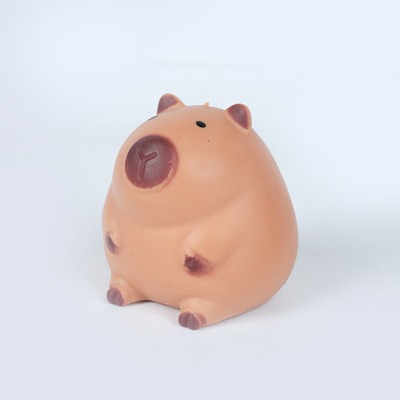
Stress relief toys have long been a staple in the arsenal of tools used to combat the daily pressures of life. Among these, flour filled stress balls have gained popularity for their unique feel and therapeutic properties. The question that arises is how durable these flour filled stress balls are when compared to other types of stress balls available in the market?
Flour filled stress balls are typically made from a soft, stretchy material, often latex or a similar synthetic compound. The interior is filled with flour, which gives these stress balls their distinctive squishy texture. The outer shell of a flour filled stress ball is designed to be resilient, yet it must also maintain a level of flexibility to allow for the flour to shift and mold as the ball is squeezed. This balance between resilience and flexibility can impact the overall durability of the product.
In comparison, other types of stress balls may use different fillings, such as gel or foam, which can affect their durability. Gel-filled stress balls, for instance, tend to be more solid and less prone to deformation, which might make them appear more durable. However, their rigidity can also make them less forgiving when subjected to sharp impacts or punctures.
The durability of a flour filled stress ball can also be influenced by how frequently and with what intensity it is used. High usage and aggressive squeezing can cause the outer material to weaken over time, leading to potential leaks or tears. However, given that flour is a natural and biodegradable material, even if the stress ball does degrade, it poses less of an environmental concern compared to synthetic alternatives.
On the other hand, stress balls filled with foam or gel may withstand the rigors of frequent use better, as their consistency is less likely to be altered by the pressure applied during squeezing. They are less prone to leakage issues, which can be a significant factor in their longevity.
Environmental factors play a crucial role in the durability of any product, including flour filled stress balls. Exposure to extreme temperatures, moisture, and sunlight can all contribute to the breakdown of the materials used in stress balls. Flour filled stress balls, being made of natural materials, may degrade faster when exposed to moisture or humidity, which can affect their structural integrity.
In contrast, stress balls with synthetic fillings might fare better in such conditions, as they are less susceptible to natural degradation processes. However, they may also be more vulnerable to UV damage, which can cause the outer material to become brittle and crack over time.
When comparing the durability of flour filled stress balls to other types, it's essential to consider the specific use case. For individuals seeking a stress relief tool for occasional use in a controlled environment, flour filled stress balls may offer a satisfactory lifespan. Their natural filling and soft exterior provide a unique tactile experience.
In conclusion, the durability of flour filled stress balls compared to other types is a multifaceted issue. While they offer a unique sensory experience and are eco-friendly, their natural components make them more susceptible to environmental factors and frequent use. By considering factors such as material composition, usage intensity, and environmental exposure, one can make an informed decision about the durability and suitability of flour filled stress balls in their particular context.

